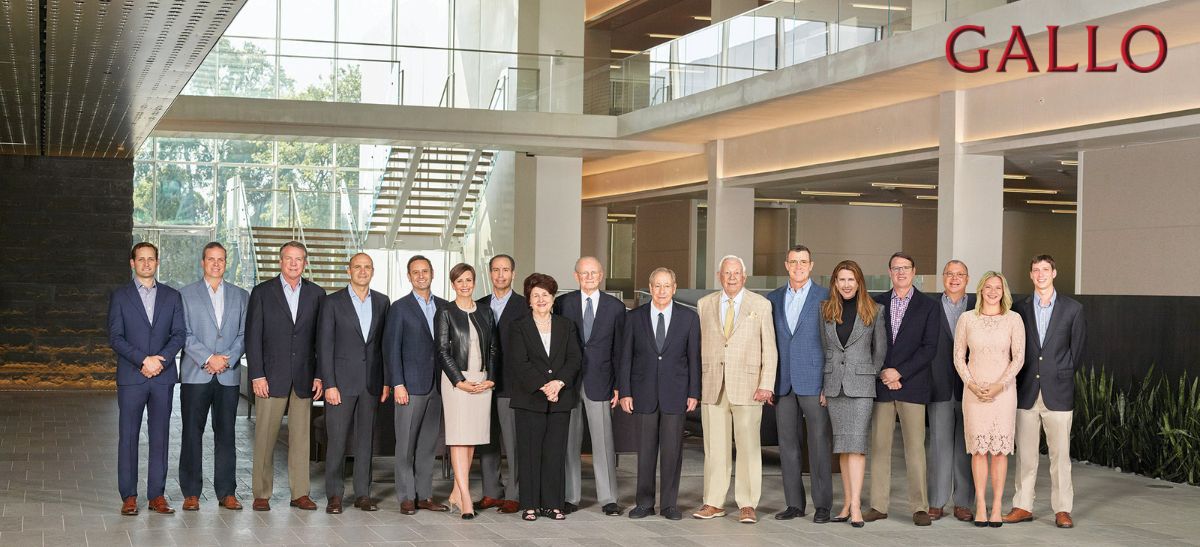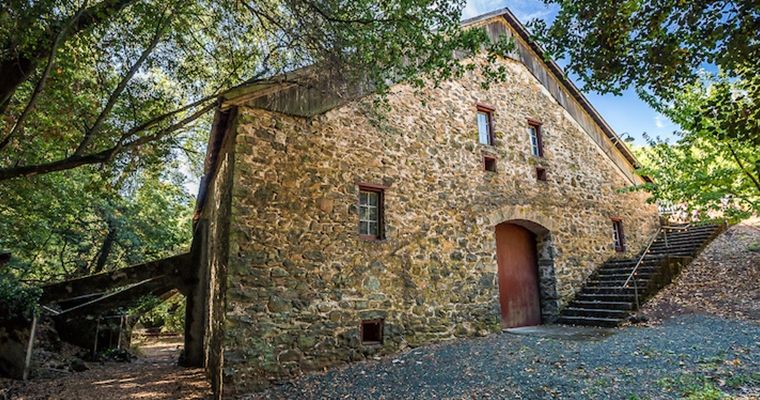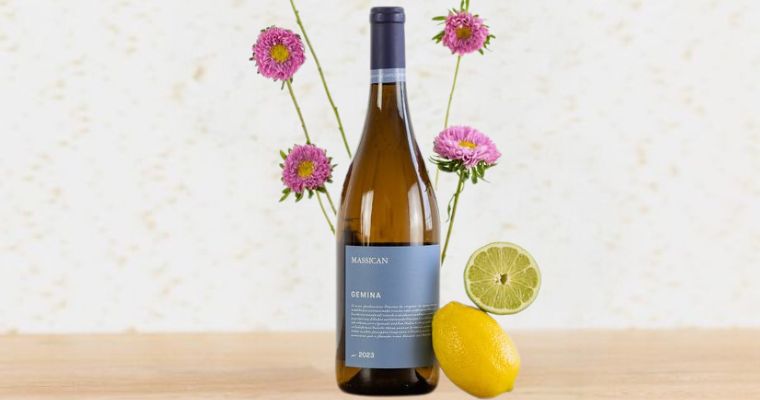Early Bird
Deadline
January 31, 2026
Judging
Date
May 18, 2026
Winners
Announced
June 10, 2026

“Gallo”, “premium”, and “luxury” may not commonly go together in the same sentence. While “premiumization” is now a wine industry buzzword, very common in wine competitions, Gallo has had a long head start and continues to implement a clear strategy for highly-segmented marketing and production of well-targeted luxury wine.
In February 2024, E&J Gallo changed its name and logo, shortening the name to remove reference to the company founders, Ernest and Julio, and to wine. “The simplified name removes all limitations; it recognizes the broad family involvement, as well as our wide-ranging portfolio of wines and spirits,” said Stephanie Gallo, Chief Marketing Officer at what is now GALLO. That’s in all caps.
Anyone who has lived in the Americas will know Gallo wines. It counts as the largest winemaker in the world, produces its bottles, and also increasingly produces spirits, blended, and ready-to-drink products. It owns Barefoot Wines as well as the Gallo Family Vineyards brand and “Thunderbird,” the sales of which in the 1950s and 1960s paved its way to market domination. It has recently acquired a beer brand.
“Removing limitations” means that in the view of the Gallo family, limitations existed. Any basic SWOT analysis of GALLO reveals a weakness: E & J Gallo was often associated with low-end wines, wine coolers, and the like. Sophisticated wine and Gallo don’t go together in common perception.
That, however, is a mistaken perception.
In 2012, Information Week noted: “You might expect a 79-year-old, family-owned agricultural business to be a sleepy, low-tech affair, but not E. & J. Gallo Winery. It has all the product development, distribution, and customer research sophistication of a consumer products giant, backed by cutting-edge analytics.” That savvy has long extended not just to business acumen and market segmentation but to quality wine as well.
Many were surprised when within a month in 2023, Gallo acquired Rombauer and Massican, two very different but definitively high-end California winery operations that have won many wine competitions and awards. Now, there’s the name and logo change. Is Gallo trying to upscale? That has long been the story; it’s nothing new.

19th century Monte Rosso winery; source:GuildSomm
The best example, perhaps, is the 18 months of negotiation that started in 2000 leading to the 2002 acquisition of Louis M. Martini. The Martini and Gallo families both pioneered post-prohibition winemaking in the mid-1930s. “The Martini deal gives Gallo its first wholly owned winery in California's premier winemaking region,” Napa, noted Wine Spectator at the time.
A tradition of excellence went with the sale. From the 1940s through the 1970s, Martini's Cabernet Sauvignons, including those made at the Monte Rosso vineyard in the Sonoma Valley, developed a serious high-end, almost cult reputation. As Spectator stated, “Martini's son, Louis P., who died in 1998, was a pioneering California winemaker; he bottled the first varietal Merlot in the state, championed Pinot Noir from the Carneros district, and was an early proponent of cold-stabilized fermentation for white wines.” But by 2002, however, Louis Martini was known for “value wines,” much like the main Gallo lines. So, why buy it?
As a rare 1999 interview with Julio Gallo made clear, the company has a long institutional memory, tailors marketing based on knowing the consumer, and constantly strived towards premiumization, not just now or in 1999, but since the 1930s. Their approach is multifaceted, based on the power of knowledge and analysis, and has always involved competition, strategic acquisitions, and sales. Gallo and its competitors helped, as I wrote last year, “create the wave of California wineries in the seventies,” resulting in today’s premium and luxury industry. In 2024, Stephanie Gallo emphasizes that the company’s products address “the total alcohol beverage category,” including segments such as “table wine, sparkling and luxury wines, beverage products, dessert wines, and distilled spirits.” GALLO is indeed an award winner in many wine and spirit competitions at all price levels.
Gallo then built Louis Martini back into a high-end wine producer, now well respected for premium quality wines, single vineyard wines, and specialty wines such as Petite Syrah and Monte Rosso Cab Franc as well as the Lot 1 Cabernet Sauvignon. The 2015 vintage currently sells for $270 per bottle. Louis Martini has been transformed and premiumized under Gallo’s leadership since 2002.
Let’s take a look at the past several years of GALLO's business history to see if there’s a pattern.
In 2016, eighteen years after its founding, Gallo bought Orin Swift Cellars, which the company characterized as “a brand known for their excellent wines, bold imagery, memorable names and creative labels.” This company was the brainchild of creative winemaker Dave Phinney. Key features: an “exciting approach to brand innovation,” it's status as a “multinational luxury wine brand”, and its “large consumer following” (which we will see again). These are not cheap wines.
In 2019, Gallo bought both the Pahlmeyer and Jayson by Pahlmeyer wine brands, a Napa-based producer of Bordeaux-style wines ranging from $30 to $350 per bottle.
In 2021, Gallo “teamed up” with Randal Grahm the famous, idiosyncratic “Rhone Ranger” who started Bonny Doon (which he sold). This new project is called “The Language of Yes.” The goal: a “quest to make truly original wines in the New World—and one that would be essentially impossible for me to undertake entirely by myself,” Grahm told Wine Spectator. “Truly original wines” don’t mean Chardonnay and Cabernet Sauvignon, but rather perfecting wine from much more unusual varietals. This transaction was all about freeing Grahm’s creative winemaking capacities while GALLO looked after the business details, which puts huge marketing and distribution prowess in service to a niche winemaker. “We can bring forward the vision of some of the most interesting and creative people in wine,” Joseph Gallo told Spectator. Indeed, Joseph manages the Luxury Wine Group.
In 2022, Gallo snapped up Denner Vineyards, including the brand, the tasting room, the winery, and 130 acres of proven Paso Robles vineyards in Willow Creek and Adelaida. What did they produce? “Complex red Rhône- and Bordeaux-style wines.” Again, the winemaker, Anthony Yount, continued in place making his wines the way he does.
Then there was the 2023 acquisition of the iconic Rombauer Vineyards for over $85.6 million. The purchase includes the brand, three production facilities, two tasting rooms with “breathtaking vineyard views,” and over 700 acres in production in Carneros, Atlas Peak, St. Helena, Calistoga, Sonoma Valley, and the Sierra Foothills. Rombauer emphasizes sustainable viticulture and has an enviable business track record. The management team remains in place and CEO Joseph Gallo emphasized “family” alongside the “Rombauer brand,” clearly buying “a reputation around quality and integrity.” Rombauer is all about Chardonnay and other varietals that sell well already, but to upper-middle-class Americans. This was a big deal, finely targeted to place GALLO at the top of the premium and luxury wine pyramid.

A niche, high-end wine from Massican; source: Massican
A month later, another idiosyncratic “cult” winemaker and another small brand: Massican was acquired. High-end wines from unusual, Italian grapes. Winemaker Dan Petroski, like Grahm, like the Rombauer team, like the Martini team, like Dave Phinney, stays on doing what he does best while Gallo handles the business side. At the time, Gallo said this was all about wines that offer an “authentic experience.” Was Gallo buying something mainstream? No. “These are not typical wines, especially for California; they're low in alcohol, high in acid, salty, fresh. I think that's because they're an extension of Dan—there's a humanity and vision to his wines," said a Gallo spokesperson.
Then we have the April 2024 sale of Columbia and Hogue, two large operations in Washington State. That’s it for Gallo in Washington. Expert Sean Sullivan of the Northwest Wine Report characterizes this as a “disappointing end to Gallo’s chapter in Washington.” “The reality is that Columbia and Hogue were always going to be very small parts of the company’s giant portfolio.” That’s true. Gallo boasts $5 billion in revenues; but it’s equally true for Massican, The Language of Yes, Denner, Pahlmeyer, and Orin Swift. It seems to have more to do with substantial fine adjustments to the brand portfolio based on a vision of the wine market’s future, a vision that now does not include Washington State but focuses on California’s diverse terroirs and cult winemakers.
Citing Gallo’s 2021 purchase of 30 low- to mid-level brands from Constellation for $810 million, VinePair says, “The refocus on the luxury tier seems to be an about-face [for Gallo] to the business strategy of just a couple of years ago.” Not really. This seems to be a longstanding strategy to put resources in all profit-making wine sectors, large and small, mass, and niche. Remember, GALLO has removed “all limitations.” Future wine and spirit competitions in the luxury category will be interesting to watch.
Enter your Wines now and get in front of top Sommeliers, Wine Directors, and On-Premise Wine Buyers of USA.
